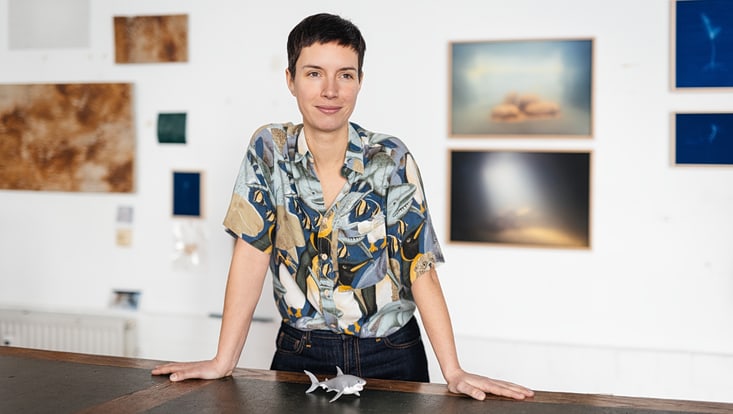Simone Kessler

Photo: Enver Hirsch
Curriculum
Simone Kessler is a multidisciplinary artist who investigates, through creative processes, philosophical questions that interconnect human systems, ecology and science. Her practice is structured in large thematic series, distinct but also closely interrelated: Sequenzen [Sequences], since 2012, Räume [Spaces] since 2014, Clay Studies, since 2015, and Earthly Matters since 2019. As Simone Kessler advances in her research, she incorporates into these ever expanding series new works which may take multiple forms: installations, sculptures, drawings, videos, photographs or object performance. Often taking theoretical reflections as a starting point, she creates subtle poetic representations of certain natural or physical phenomena, which are complex and not discernible at first glance; Clay Studies and Earthly Matters, for instance, deal with the resistance of natural materials, magnetic attraction, water pollution, and the consequences of certain uses of land- and seascapes.
In her most recent works, Simone Kessler questions man-made concepts such as “intelligence”, which has historically been used to place human beings at a higher level in the natural system by researching intra- and interspecies communication, thereby emphasizing the potential of cultivating empathy between human and more-than-human beings. Many of her projects require medium- or long-term research phases and interdisciplinary collaborations, in which scientists, fellow artists and curators join her in the task of making visible some of the urgent issues that affect human and more-than-human life in our present time.
Publications (selection)
- female follows form, Simone Kessler & Edward Beierle, self-published, ISBN 9783941722958.
Research project: Someone's Sensing
The artistic research Someone’s Sensing is a transcultural and interdisciplinary project that aims to shed light on more-than-human perspectives, explore interspecies communication, and encourage foster greater empathy for other forms of life. The project questions what lies beyond our human sensory experience and how we can approach the worlds of other living beings — even if they partially or entirely elude our perception. A close examination of the transformations humans impose on the material world, alongside the agency of non-human beings, ultimately also challenges the fundamental anthropocentric categories of knowledge—such as science—and their related power structures.
Someone’s Sensing places a special emphasis on seascapes, viewing them as extended landscapes shaped by human forces. It explores how science and technology expand our senses beyond their natural limits—for example, into infrasound and ultrasound ranges—where signals from turtles and dolphins travel. How do creatures that rely on sound for orientation move through murky waters, or in complete darkness? What do sharks feel in their ampullae of Lorenzini when they detect the electromagnetic signals triggered by the heartbeat of fish or the electrical currents of undersea cables? What do whales hear all day – and what do they tell each other when they sing and click? Could artificial intelligence one day help us speak the language of whales — and wouldn’t the first step toward that understanding be to listen more closely?
